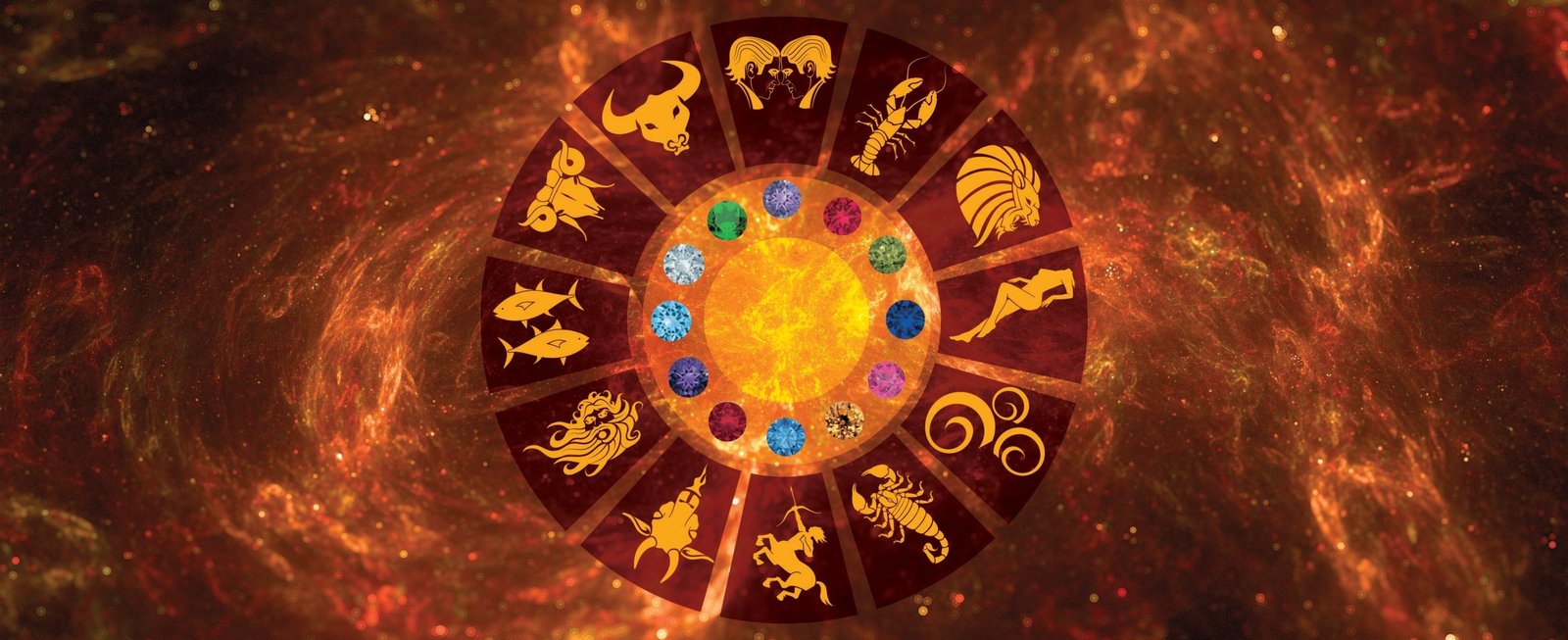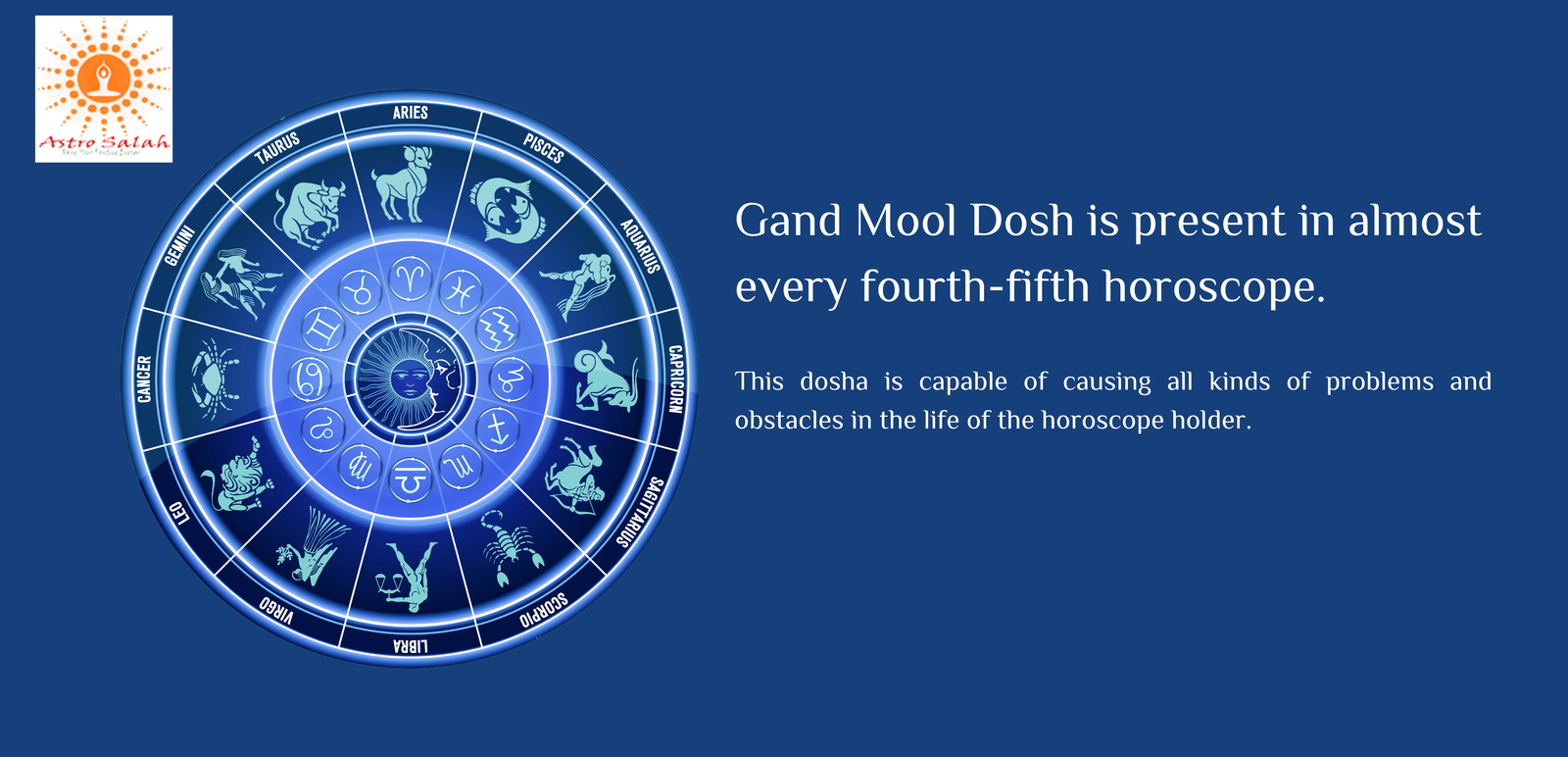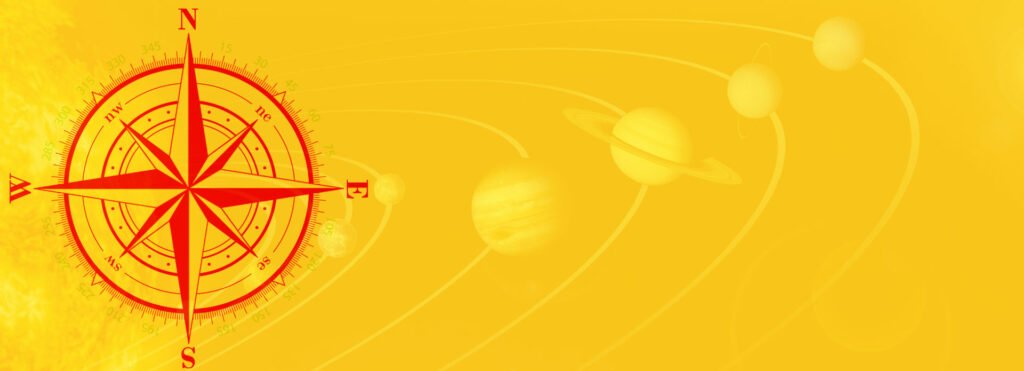Gandmool dosh
Gandmool dosh, also known as Gandmool Nakshatra dosh, is an astrological concept in Vedic astrology that focuses on specific nakshatras (lunar constellations) and their potential impact on an individual’s life. Gandmool dosh occurs when a child is born under certain specific nakshatras: Ashwini, Ashlesha, Magha, Jyeshtha, Moola, Revati, and Abhijit. The dosh is said to cause challenges and obstacles throughout a person’s life. Gandmool dosh is considered inauspicious, and various beliefs and superstitions are associated with it. It is related to adverse events, health issues, financial problems, and other difficulties in life. Various remedial measures mitigate the effects of Gandmool dosh. These can include performing specific poojas (rituals), offering prayers, reciting mantras, wearing specific gemstones, and seeking blessings from deities associated with the respective nakshatras. It is essential to consult with a qualified astrologer to accurately determine the presence of Gandmool dosh in a birth chart. The analysis considers factors such as the exact placement of the Moon in the specific nakshatra and its relationship with other planetary influences.
How is Gandmool dosh formed in a person’s Kundali?
Gandmool dosh forms in a person’s Kundali (birth chart) based on the placement of the Moon in certain specific nakshatras (lunar constellations). Here is how Gandmool dosh is formed:
- Nakshatras: Gandmool dosh is associated with seven nakshatras: Ashwini, Ashlesha, Magha, Jyeshtha, Moola, Revati, and Abhijit (considered an honorary nakshatra). If the Moon is positioned in any of these nakshatras at the moment of a person’s birth, it’s believed that Gandmool dosh exists.
- Padas or Parts: Within each nakshatra, there are four parts called padas. When the Moon is in the 1st, 4th, or 7th pada of any of the seven Gandmool nakshatras, Gandmool dosh is formed.
- Intensity:The intensity of Gandmool dosh can differ based on the specific nakshatra and pada involved. Some combinations are considered more severe than others, and their impact on the person’s life can vary accordingly.
- Timing:Gandmool dosh is present from the individual’s birth until the eighth day after birth. After this period, it is believed to no longer affect the individual.
Individuals believed to have Gandmool dosh may consult with a knowledgeable and experienced astrologer who can provide a detailed analysis of their birth chart and offer insights, guidance, and potential remedies to mitigate any adverse effects of Gandmool dosh.
What is the effect of Gandmool dosh on a person’s life?
As per Vedic astrology, Gandmool dosh potentially affects a person’s life. Here are some commonly mentioned effects associated with Gandmool dosh:
- Financial Challenges: Individuals with Gandmool dosh may experience financial difficulties or instability. It can manifest as struggles with income, investments, debts, business or career growth obstacles.
- Health Issues: Individuals with Gandmool dosh may be more likely to have health problems or vulnerabilities. These can manifest as recurrent health issues, chronic ailments, or susceptibility to accidents or injuries.
- Delayed Achievements: Individuals with Gandmool dosh may experience delays or obstacles in achieving their goals or aspirations, which pertain to education, career growth, marriage, or other important milestones in life.
- Emotional Turbulence: : Individuals with Gandmool dosh may experience heightened emotional turbulence or instability. They could struggle with mood swings, anxiety, stress, or emotional setbacks.
- Relationship Issues:Gandmool dosh can be associated with relationship challenges. It may cause difficulties in finding or maintaining harmonious partnerships, and there may be conflicts, misunderstandings, or disharmony in relationships.
- Spiritual Growth: Gandmool dosh is a chance to grow spiritually. Its challenges may prompt individuals to seek spiritual practices, self-reflection, and inner transformation.
Astrologers consider other astrological factors and analyse the overall chart to assess the impact of Gandmool dosh on an individual’s life. Consulting with a knowledgeable astrologer is advisable to obtain personalized insights and guidance specific to one’s birth chart and circumstances.
Gandmool dosh Nivaran Puja
Gandmool Dosh Nivaran Puja, also known as Gandmool Dosh Shanti Puja, is a religious ritual performed to mitigate or alleviate the adverse effects of Gandmool dosh. This puja is conducted by a qualified Vedic priest or astrologer, typically with the participation of the individual or their family members. Here are some aspects to consider regarding the puja:Purpose:
The primary purpose of the Gandmool dosh Nivaran Puja is to seek blessings and remove the unfavourable influences of Gandmool dosh on an individual’s life. The puja aims to bring harmony, balance, and positive energy to counteract the challenges associated with Gandmool dosh.Timings:
Gandmool dosh Nivaran Puja is performed on specific auspicious days or during specific astrological alignments. Consulting with a knowledgeable priest or astrologer is essential in determining the ideal timing for the puja based on one’s birth details and astrological factors.Preparation of Puja:
Before the puja begins, the place of worship or the temple should be cleaned and decorated with flowers, rangoli (coloured patterns), and other auspicious items.Invoking Deities:
The puja starts with chanting sacred mantras and calling upon the deities to ask for their blessings and help remove obstacles or negativity.Ganesh Puja:
First, Lord Ganesha, known as the remover of obstacles, is worshipped to ensure the puja is prosperous and proceeds smoothly.Navagraha Puja:
Worship the nine planetary deities, known as Navagrahas, to calm any negative effects from the planets, including the Moon (Chandra) in the case of Gandmool dosh.Specific Nakshatra Puja:
Based on the person’s birth chart and the nakshatra linked to Gandmool dosh, a special puja may be conducted for the ruling deity of that nakshatra.Rituals & Offerings:
During the puja rituals, offerings like flowers, fruits, incense, and sacred items are presented to the deities. The priest chants appropriate mantras and conducts rituals to soothe any adverse effects caused by the dosh.Blessings:
At the end of the puja, the priest prays for the health and prosperity of the individual and their family and bestows blessings on their well-being.
Following the puja, some individuals may continue to perform specific practices or rituals, such as regularly worshiping the associated deities, reciting mantras, wearing specific gemstones, or observing fast on auspicious days.
Benefits of Gandmool dosh Nivaran Puja
Gandmool dosh Nivaran Puja, also known as Gandmool dosh Shanti Puja, is believed to provide several potential benefits for individuals affected by Gandmool dosh. While the effectiveness of the puja can vary based on individual beliefs and interpretations, here are some possible benefits that are often associated with Gandmool dosh Nivaran puja:Enhancing Positive Energies:
The puja invokes the blessings of deities associated with the nakshatras connected to Gandmool dosh. By offering prayers, reciting mantras, and performing rituals, it attracts positive energies and blessings, fostering balance, harmony, and favourable outcomes.Reduction of Health Issues:
The Gandmool dosh Nivaran Puja is believed to alleviate or reduce health issues faced by individuals born under Gandmool nakshatras. The puja aims to calm any negative influences that could affect their well-being, potentially leading to improved health outcomes.Spiritual Growth:
Engaging in Gandmool dosh Nivaran Puja can also foster spiritual growth and connection. It provides an opportunity for introspection, devotion, and surrender, allowing individuals to cultivate a deeper connection with the divine and align their energies with higher spiritual principles.Positive Mindset & Decision Making:
By participating in the puja and seeking divine blessings, individuals may experience a shift in their mindset, leading to more positive thinking and decision-making. This can contribute to improved clarity, confidence, and navigating challenges associated with Gandmool dosh.Advancement in Career and Education:
The puja is done to clear hurdles in both career and education paths. By asking for blessings from the deities and calming any negative influences, people may find that their careers move forward and they can succeed in their studies.
It’s important to note that the benefits of Gandmool dosh Nivaran Puja are subjective and depend on individual beliefs, faith, and the overall alignment of planetary influences in one’s birth chart. Additionally, the puja should be approached with a balanced perspective, and its effectiveness may vary from person to person. Consulting with experienced priests or astrologers can provide further insights and guidance specific to one’s situation.
Remedies for Gandmool dosh
When it comes to mitigating the effects of Gandmool dosh, various remedial measures are suggested in Vedic astrology. It is important to consult with an experienced astrologer or priest who can provide personalized guidance based on individual birth chart analysis. Here are some commonly recommended remedies for Gandmool dosh:
- Gandmool dosh Nivaran Puja A common remedy for Gandmool dosh is to perform a puja dedicated to the ruling deity of the nakshatra linked to it. This special puja aims to calm any negative influences and ask for blessings for the person’s overall well – being.
- Gemstone Recommendations: Wearing specific gemstones associated with the ruling planets of the problematic nakshatras can be beneficial. The choice of gemstone depends on the individual’s birth chart and should be selected after consultation with an astrologer
- Rituals for Ancestors Paying homage and performing rituals for ancestors through Pitru Tarpan or ancestral rituals can help alleviate the effects of ancestral karma. This includes offering food, water, and prayers to departed ancestors and seeking their blessings.
- Charity and Donation Making donations to individuals or organizations in need, supporting educational initiatives, and contributing to social welfare activities are recommended as potential remedies for Gandmool dosh.
- Pooja and HomamPerforming specific poojas and homams dedicated to the ruling deities associated with the problematic nakshatras can help appease the celestial energies and mitigate the dosh. This includes reciting relevant mantras, offering prayers, and conducting rituals under the guidance of a qualified priest.
- Reciting MantrasReciting mantras devoted to the ruling deity of the nakshatra or to the ruling planet connected with Gandmool dosh is believed to ease negative effects. The particular mantra and how often it’s repeated may differ depending on individual astrological factors.
- Fasting (Vrat)Observing specific vrat or fasting days dedicated to the deities associated with the particular nakshatras can contribute to appeasing the dosh. However, it is essential to consult with an astrologer for personalized guidance and to determine the appropriate fasting days.
- Astrological RemediesIt is recommended to seek advice from a knowledgeable astrologer for personalized solutions based on your birth chart. They can suggest specific rituals, gemstones, or other remedies customized to address the specific planetary alignments causing Gandmool dosh.
It is important to note that the effectiveness and appropriateness of these remedies may vary depending on individual birth charts and astrological factors. To receive personalized guidance and determine the most suitable remedies for one’s specific situation, consult with a knowledgeable astrologer or priest who specializes in Gandmool dosh.
FAQs for Gandmool dosh
Here are some frequently asked questions about Gandmool dosh:
- What is Gandmool dosh?Gandmool dosh is an astrological concept in Vedic astrology that relates to the placement of the Moon in specific nakshatras (lunar constellations). When the Moon is placed in any of these nakshatras, it is believed to form Gandmool dosh.
- Which nakshatras are considered for Gandmool dosh?The seven nakshatras associated with Gandmool dosh are Ashwini, Ashlesha, Magha, Jyeshtha, Moola, Revati, and Abhijit (considered as an honorary nakshatra).
- How is Gandmool dosh identified in a birth chart?An astrologer will analyse the placement of the Moon in the birth chart to determine if Gandmool dosh is present. It depends on whether the Moon falls in any of the Gandmool nakshatras and in which pada (part) of the nakshatra it is located.
- What are the effects of Gandmool dosh?The effects of Gandmool dosh can vary, but they may include financial challenges, health issues, relationship difficulties, emotional turbulence, delayed achievements, and spiritual growth opportunities.
- What remedies are suggested for Gandmool dosh?Remedies for Gandmool dosh may include: • Performing specific poojas. • Wearing gemstones. • Conducting ancestral rituals. • Engaging in charitable acts. • Practicing spiritual practices. • Observing fasts. Individual birth chart analysis and guidance from an astrologer should determine remedies.
- How effective are the remedies for Gandmool dosh?The effectiveness of remedies for Gandmool dosh varies from person to person, and it depends on several factors, including individual beliefs, faith, dedication, and the overall alignment of planetary influences. The guidance of an experienced astrologer is essential for personalized remedies.














